Description
This Kedarkantha Trek Package is Available in Two Variants
(Sankri to Sankri – 4799 + 5% Gst)
(Dehradun to Dehradun – 6199 + 5% Gst)
For More Information or Query You Can Reach Out on – 91 8949416124
Kedarkantha Trek Complete Details
Kedarkantha trek is one of the most popular treks in the Indian Himalayas in Uttarakhand where trekking is possible for more than 10 months in a year except July and August (i.e. especially during the rainy season trekking in kedarkantha is avoided.) The mountains are covered with snow, the mesmerizing view from the top attracts most of the treks. Kedarkantha is located in Govind Wildlife sanctuary in Uttarkashi district. Kedarkantha trek height is 12,500 ft approx. The parent range is Garhwal Himalaya. There are numerous reasons why this kedarkantha trek is so famous among Indian himalayan ranges. The most popular reason is for The Summit climb. As you start your trekking right from the base camp the summit looms large. As you start climbing in the early morning the beauty of the world just opens around you.
The trekking is not so easy as you get closer to Summit it gets tricky also. But the big mountains of The himalayan range in upper himalaya accomplanises until you reach the summit. As you reach the summit the view provides you a great sense of satisfaction , boosts your confidence that you finally accomplished your goals. The feeling is so pleasant that’s not definable.
Apart from the summit, this trek is also very famous for its beautiful clearing and campsite. This trekking is full of clearing on different routes; these are just at the right location giving you proper direction and appreciate the track and its views.
Another important reason which makes this trekking more famous is the beautiful forest from all 3 routes . The forest is dense and full of green and amazing views that makes your experience on trekking explore the beauty of nature more deeply.
Kedarkantha Mountains are photogenic
Kedarkantha trekking is one of the famous trekking routes to Indian Himalayan ranges which lie in Uttarakhand. The trek begins from a traditional village called Sankri. The sour village is covered with mountains covered with snow, the sparkling tons and the river flowing from it. The charm and beautifulness of nature is the most beautiful thing about this place. Houses are made of wood, which makes that place more delightful and adorable. The sour village has its own customs , rituals and conventions. The people there wear traditional dress and cook traditional foods .
The beauty of this entire trek can be seen in Himalayan ranges. There is one point to be kept in mind that kedarkantha is a triangle -shaped mountain which makes this trek more adventurous and explosive. Every Year a huge fair is organised in kedarkantha on 15 th june.
This is a special moment when people celebrate this festival with local music and drums.
View from kedarkantha Summit
The most interesting fact about Kedarkantha trek is that the beautiful Himalayan ranges are clearly visible . which are Swargarohini peak I,II,III (6300 m), Black Peak (6387m), Bandarpunch Peak (6300m) apart from this all the mountains such as Rupin pass,Supin range,Kimloga peak, Baradas lake range etc are clearly visible.
From the kedarkantha trek all other views in Indian HImalayan ranges are clearly visible such as Har ki dun valley,Ruinsara valley bail, Borasu pass , Sarutal pass , fachu kandi pass etc.
The view of the mountains and forest during the entire trek are so beautiful that it induces every trekker to capture the beauty of the view and have good snap of this beautiful environment to keep with themselves throughout their journey of life in the remembrance that once in life the got an opportunity of explore the beauty of Himalayan ranges.
Starting Point of kedarkantha trek
Trekking for kedarkantha peaks beagans from a small village called Sankri. There are 13 peaks of Himalayan ranges which are easily visible from Kedarkantha peak. There was a lakh called Juda-ka-talab, the localite believes that lord shiva has once stayed in kedarkantha. It is believed that lord shiva hair has fallen once during his medication to form this lake named as Juda -ka -talab The difficulty level for climbing it ranges from low to medium.
Duration
It basically takes 6 days and 5 nights to complete your kedarkantha trek. For trekking you need to carry with yourself an oxygen cylinder as you reach at high altitudes the intensity of oxygen is less at higher level of altitude so to maintain your oxygen level in your body you need to carry an oxygen cylinder with yourself, first aid box, necessary medical equipment and stretchers.
Temperature of Kedarkantha
During the day the temperature of kedarkantha fluctuates between 8 degree celsius to 15 degree celsius while at night the temperature reaches to -3 degree celsius sometimes experiencing cold chill winter’s night to 5 degree celsius.
Best time to visit Kedarkantha Trek
Best time for kedarkantha trek is between April and November however you can go trekking for 10 months a year except during the peak rainy season i.e. between July and august.
Kedarkantha In December, January and February
Kedarkantha is most popularly a winter trek. The mountains during this season are beautifully covered with snow and an adventurous summit climb attracts anyone to go weak on knees. You get to trek in a dense forest covered with snow, you need to learn how to camp on thick moulds of snow.
Starting from 15th dec to mid january the kedarkantha trek becomes an extremely crowded area. As more and more people come to explore this beauty of nature.
Kedarkantha in March and April
During the March season the snowfall is quite residual which means less snow will be there as compared to the winter season. The snow is visible only in the region which is higher than the campsite towards the Summit. Due to the spring season, you will also see the fresh blooming grasslands and trees in the forest are covered with fresh green leaves , flowers and fruits.
This is a view when you want to see nature full of colours in contrast to snowfall on the mountains.
In April, as the beginning of summer season is marked, the snow begins to melt due to the scorching sun rays. Kedarkantha in April is visited by people to see the beautiful landscape after the extremely cold winters. The weather during this season is pleasant to start your trekking and full of colours on your way to kedarkantha trek.
Kedarkantha In May and June
Trekking during this season is marked by bright sun in the morning and nights are not so cold as compared to other months of the year. During June there is occasional rainfall marking the arrival of the monsoon season.
During this season the crowd is less as more and more people begin to trek at higher altitudes. Although it is a good time to start your kedarkantha trek if you want to explore nature and make your trek adventurous in isolation then this season is considered as the best one to start your trek.
In monsoon season i.e. during July and August kedarkantha trekking is not suitable nor allowed because of heavy snowfall in this area, landslides and other natural calamities can take place which can cause serious accidents to the lives of people.
Kedarkantha In September, October And November
After the monsoon the entire kedarkantha trek starts in September. The pasturelands,water meadows and forest are fresh and alive in September and continue till October. During this season the mornings are mild and nights are extremely cold. There is mild rainfall till the end of september. The air is crisp and the view of the upper himalaya is clearly visible. The trek also continues in the November season. With the beginning of the Winter season. The views and beauty of nature still remains crisp for the trekkers.
Throughout the year, 7 months are considered ideal and best for kedarkantha trek.
Weather on kedarkantha trek
The weather on kedarkantha trek remains the same as other treks in Uttarakhand . the weather of kedarkantha during different seasons are –
Kedarkantha during Winter season
With the winter season it is marked with fresh snow, cold days and extreme cold nights.
During the day the temperature ranges between 8 degree to 10 degree celsius , while during night the temperatures drop between 0 degree to -5 degree celsius. You can tackle the winter trek with the right gear.
For those who want to experience trekking in snow can plan their kedarkantha trek during mid january and february during this period the place is not too crowded you can enjoy your trekking experience in isolation with snowfall.
Kedarkantha during Spring season
With the beginning of spring, the grasslands begin to lush with greenery covered with fresh leaves, fruits and flowers with melting snow. The sun is brighter days and nights are still cold but not so extreme;ly cold as compared to winter season. Temperature in day is between 15 to 18 degree Celsius and nights between 0 to 5 degree celsius.
Those who are planning for trekking with lush green grasslands and forest and melting snow can plan their trek during this season.
Kedarkantha during Summer season
In the summer season you will see bright sunny days and mild cold nights. If you want to do your trekking in a comfortable temperature then you can plan your trek during this period.
The temperature during summer season fluctuates between 18 degree to 24 degree celsius in day and at nights it fluctuates between 3 degree to 8 degree celsius.
Kedarkantha during Monsoon season
In Monsoon season it is hard to continue your trekking as in monsoon season due to heavy rainfall, landslides , slippery areas etc.
In this season, kedarkantha trek is mainly recommended to avoid trekking between July to mid September.
Kedarkantha during Autumn
This time period is considered as the ideal one for trekking if you are looking for a crisp view of mountains, lush green grasslands, forests begin to change their colour marking the arrival of the winter season. This is a beautiful time if you plan to trek.
You can also see some small streams of fresh water. As we move forward to the winter season you can see the days get shorter and nights much colder and longer.
Temperature in the morning is expected between 10 to 15 degree celsius and night’s temperature often drops to zero.
Age limit for kedarkantha trekking
- People between the age limit of 5 years to 60 years are allowed and should go for kedarkantha trekking.
- It is also necessary that a person should be completely physically fit and fine to start his trekking.
- During winter trek in kedarkantha people between the age group of 10 years and 55 years should be allowed.
- Kedarkantha trekking boosts up the energy level and confidence among the trekkers . They are full of enthusiasm for this trek.
- Visitors who go trekking for the first time are so excited to get the better opportunity to explore the beauty of nature .
Difficulty level during kedarkantha trek
Kedarkantha is a beautiful and uphill trek in the Uttarakhand Himalayan ranges . This trekking is great for those people who have the passion and desires of mountaineering, adventures, exploring the beauty of nature.
Kedarkantha trekking is from easy to moderate level. If you start the trekking from Sankari village then it’s quite tricky also.
Not just this, the duration of the trekking is quite long also. It takes around 7- 8 hours on the summit trek day (5 hours of steady trekking & 2 to 3 hours of fast descent). This puts a challenge before legs and a person should be physically fit to complete the trek.
After viewing all the points, kedarkantha trekking is marked as easy to moderate trekking.
However it must be noted that the easy trek can turn into a difficult one if the person is not physically fit and fine.
Safety level in kedarkantha trekking?
Kedarkantha trekking is a very safe one. This can be determined on a variety of factors which includes terrains, altitude and weather.
Safety of trekking on the basis of Terrain
When the question about terrain rises, kedarkantha is considered as the safest one. On the basis of following factors-
- Well maintained routes
- Easy and multiple well maintained exit points
- Well maintained campsites
- Well maintained trails
There are hardly any sections which are difficult during the routes . However, the only section that is tricky is The Summit, one which requires technical assistance.
Safety of trekking on the basis of Altitude
Kedarkantha trek elevation is around 12,500 ft . During the first 3 days of the trek the person trekkers tek around 6300ft in the later half it covers rest distance.
Points to be kept in mind regarding AMS
- The campsites are placed within the normal altitude each day. Keeping a little pace increases the chances of getting AMS .
- The second day is shorter in length and altitude gain. This provides you an opportunity to rest before a long Summit terk.
- On the third day, you trek a lot of height . This requires help to recover from the AMS symptoms that might take place on the Summit day.
The trekker can get hit by AMS from the first day of trekking; most common symptoms are headache and tiredness which is perhaps due to lack of sleep. The medicine which could be given is a curative course of diamox which is 250mg.
The earlier these symptoms are treated the higher the chances of finishing the trekking on time increases.
As you trek higher and higher towards kedarkantha peaks after11000 ft there are chances of HAPE/ HAC to occur as well this must be also cured on time.
Safety of trekking on the basis of Weather
On the basis of weather, kedarkantha trekking is safe for 10 months in a year. However the trekking becomes tricky and slippery when there is a lot of snow. It can be managed with the help of various equipment such as microspikes, gaiters etc.
The trekking also becomes difficult due to extreme cold winters as it can cause various injuries related to extreme colds.it can be tackled with wearing the right winter costume especially designed for trekking, right technique of layering etc.
Why should you choose kedarkantha trek ?
Although there are varieties of reasons to go for kedarkantha trek but few of the main things which describe how beautiful and exciting it is for you to choose kedarkantha trek –
- Drive to the basecamp
This is one of the most beautiful drives which you have ever experienced on any trek. This is an 18 km stretch of dense pine forests after Paroula and the drive through the Morin valley alongside River Tons you will experience it for a long time during your trekking.
- The Homestays
During kedarkantha trek you can see the houses of people are made of wood, they wear traditional dresses, the rituals and custom of kedarkantha is different yet that culture attracts the trekkers more. The closer you get, the closer the experience of the place ,custom, culture and people you have.
However on your kedarkantha trek you spend both your first night and last night of the trek in Gaichawan Ghao.
- The Forests
When you are in the forest, especially from Gaichawan Ghao to Summit you get a strong feeling of oneness with the surroundings there.
Many factors which help you to feel like closely attached to the place-
- The forest is less travelled by the people hence is not a crowded area . Apart from the villagers, only the trekkers to kedarkantha use this route. If you are not careful during the route you can easily get lost in the forest.
- The forest is extremely dense . The sun plays hide and seek and this makes trek more interesting and adventerous.
- Along with being dense the forests are diverse. Also in Dedar, Pine and Oak you can see a variety of trees and shrubs on the way which you have never seen before.
The forest during the kedarkantha trek from Gaichawan Ghao to the Summit with its diversity of colours, grasslands, shrubs etc. make this trek more adventurous and enhances the beauty of nature.
- The clearings
Kedarkantha trek has many clearings from all the sides. These clearings make this trek more beautiful. Infact, it is the only one trek in the entire Himalayan ranges where you have no dearth to camp. Due to these clearings, there are only multiple routes on this trek.
Other factors which make claerings more special are-
- Every clearing on this trek is different from one other. While khujey gives you the feeling of trekking along with clif, Juda ka talaq immerses you in a lake.
- The view from each clearing is simply outstanding and awesome.
- The trekkers each day feels complete with both forest and clearing. During the trek, the trekker can find a clearing every 2 hours during their trek.
- Multiple Routes
In Kedarkantha trek , the trekkers get the opportunity to start their trek and reach the summit from different routes. The trekker can choose routes which are less tricky or more tricky one, choosing the route according to the weather condition, etc. This provides an opportunity to trekkers to explore different routes as per their wish. However there are multiple routes to reach Summit.
- Sunset View
This trek offers the most beautiful views of sunsets which are so p[leasing and pleasing no words to describe the beauty of such views. They are so appleing that they remain in the eyes of the trekkers throughout the journey of their life. This also makes the kedarkantha trek more famous.
- The Summit
Kedarkantha trek is basically famous for its Summit. This trek is one of 2 summit treks; the rest are all passes or high points of Himalayan ranges.
Kearkantha trek is itself a special one as soon as you pass the treeline the summit is more clearly visible to you. So from the beginning of kedarkantha trek the trekkers know that they are on the correct route and eagarlerly this builds their confidence and enthusiasm to reach to Summit as soon as possible( that destination is no longer to them).
The kedarkantha trek slope is steady at an inclination of about 45degree to 60 degrees. At many times, put a challenge in front of experienced trekkers also. The view from the Summit of the upper Himalayan ranges is just mesmerising which adds a charm to the entire kedarkantha trek.
How to reach Kedarkantha ?
You can reach kedarkantha using various means of transportation depending on the mode which suits your pocket-
By road – Dehradun has a well connected road network. Any person by booking a cab or by self driving from different states such as Up, Rajasthan ,Delhi ,Haryana can easily reach Dehradun.
By train – Trains from all parts of India are also available to reach dehradun. Express like Nanda devi Express, Doon express, Mussoorie Express, Dehradun Shatabdi Expressetc.
By Air – Direct flights from different parts of India are available for Dehradun. Jolly Grant Airport serves Dehradun domestically for flights coming from different regions of India.
Distance to reach kedarkantha from other states
There are multiple options available to cover kedarkantha trek distance
- To reach Dehradun from delhi by flight is 207kms and Dehradun airport to Sankri 217km by taxi andSankri to Kedarkantha 23 km by foot.
- The distance between Delhi to Dehradun by Train is 302kms and Dehradun to Sankri 190kms by taxi and Sankri to Kedarkantha 23 km by foot.
- The distance between Delhi to Dehradun by taxi or bus is 249kms and Dehradun to Sankri 190 kms and Sankri to Kedarkantha 23 km by foot.
- To reach dehradun from Bangalore (by air is 1924 km),(by train is 2371 km) and Dehradun to Sankri is 217km by taxi and Sankri to kedarkantha by foot is 23km.
- Distance from Dehradun to Sankri is 190 kms.
- Distance from Mussoorie to Sankri is 160kms.
Multiple Exit points
Kedarkantha is a trek with multiple routes and multiple exit points . You can exit from kedarkantha trek from Sankri, Kotgaon or Ghaiwana Ghao . In case of emergency the closed hospital exit point ican be from Ghaiwana Ghao.
Nearest Hospital in Kedarkantha
For mild or normal medical help the nearest hospital can be found in Mori and thn in Paroula.
Mori
- Government hospital mori sankarai rd, Uttarakhand
- Primary health center Mori Uttarakhand
However, for major health issues the nearest hospitals are Dehradun and Mussoorie which are 8 to 9hrs away from the base camp of the trek.
Documents which are necessary to be carried For kedarkantha Trek
You need to carry with yourself original as well as photocopy of government Id proofs such as passports, aadhar card, voting Id, pan card, driving license etc.
Before starting the trek you need to submit the Id proofs to the forest departments otherwise you will not be permitted to continue trekking to kedarkantha by the officiers.
Other Information about Kedarkantha trek
Phone connectivity and transactions
Only the BSNL network works in Sankri base camp but many times it fails. For good networks the trekkers have to wait until they reach Mori OR Purola.
For emergencies the trekkers carry walkie-talkies with themselves to connect with their team.
ATM – ATM Facility is only available in Dehradun or Purola . It is always advisable to the trekkers to deposit their cash before or while in Dehradun as in other locations during the trek this facility is not available.
Electricity- if you are on kedarkantha trek then you should bring your own torch ,camera charger, if it is possible then you should bring extra battery for makeup with yourself because the last electricity connection which you will get is at hotel Sankri base .
When does the snow start falling in the Kedarkantha trek?
Snowfall on the Kedarkantha journey occurs primarily in December, but it can also occur in early November, depending on the season.
On November 19th, 2020, there was snowfall in the Kedarkantha trip, which was just visible.
By the way, if it rains even in October, the Kedarkantha peak becomes snowy, but I’m not sure how long that will last. The snowfall that began on December 15th lasts for a long time. In the months of January and February, Kedarkantha receives the most snowfall, which lasts until the end of May and does not melt rapidly.
Will the Kedarkantha journey have electricity?
Let me inform you that there is no electricity in the Kedarkantha trek’s forest area. At night, we use Stobe Light and/or Solar Light, as well as candal light.
If you come on this journey, you should bring your own headlight and a fully charged camera; if feasible, bring an extra battery backup, and also bring your phone once it has been fully charged; nowadays, most people use the same phone.
Only in our hotel Sankri base, where you must charge the battery of your phone and camera at night, will you obtain the last electricity.
Kedarkantha Temperature
The world-famous Kedarkantha, perched at a height of 3,850 metres and nestled in the arms of the Tons River Valley, is an iconic trip. This place attracts thrill seekers and daredevils from all over the world because to its extremely low temperatures and chilly weather all year. Kedarkantha temperature ranging from -2 to 17 degrees Celsius throughout the year, Kedarkantha has a variety of charms to offer at different times of the year. Regardless matter the time of year that travellers arrive, this gorgeous alpine resort has something to offer them. While the summers bring awe-inspiring green meadows, the monsoons bring beautiful flowers, and the autumn brings crimson sun beams and brown leaves, the winters bring the most amazing trip. The temperature in Kedarkantha is somewhat cold for the most of the year, thus visitors can visit at any time of year.
Kedarkantha Weather
The weather in Kedarkantha is cool and pleasant during the summer months of April, May, and June, making it the best time to visit. The temperature at Kedarkantha is now ranging between 6 and 20 degrees Celsius.
The Kedarkantha journey boasts a stunning verdant scenery loaded with umpteen species of colourful flowers during the summers. April sees the last of the winter snow melt away, and the pathways turn a lovely shade of green.
The month of May brings out Kedarkantha’s true summer appeal, making the region look even more enticing with the lovely scent of freshly blooming flowers filling the air. The chill is manageable at this time of year, and there is very little chance of rain.
The location, which is adorned with lush green fields, is just mesmerising at this time of year. The month of June brings full-fledged brilliance to the mountain summits, blanketing the entire valley with vibrantly coloured vegetation. Tourists can go for a hike among the tall Pine and Oak trees at this time.
Kedarkantha Trek Best Time
With the exception of the monsoon season, Kedarkantha Trek is a year-round attraction. Spring and summer, on the other hand, are ideal for hiking in good weather. Winter, on the other hand, brings a new level of difficulty for those who desire to push themselves. In reality, the best time to visit Kedarkantha Trek is between the months of December to March, when the majority of visitors arrive.
Kedarkantha Trek From Mumbai
We are ready to customise Your kedarkantha trek from mumbai or any other location, with the best means that suites you. So you can book your kedarkantha trek with us if you are looking your trip from mumbai or get you picked and drop from mumbai.
Delhi To Kedarkantha Distance
The distance between delhi to kedarkantha is 278 km only.
Despite all the fact, Kedarkantha trek is one of the most beautiful trekking to Himalayan ranges, a way to explore and mesmerise the upper Himalaya. You can also check the kedarkantha trek images from our gallery section above.
Things To Carry for the Kedarkantha Trek?
Kedarkantha Trek is a high height trek. The trekking gear you must have for this specific trek varies from typical treks. Accordingly read this entire section.
The journey would be impossible to complete without these items.
1. Trekking Shoes
Kedarkantha needs solid trekking shoes that can endure snow and have great grasp.
Rental: We have the decathlons legitimate Quechua trekking shoes for lease Rent trekking shoes Here.
2. Knapsack
A knapsack 50-60 liters is expected for a trek like Kedarkantha. Your knapsack ought to have great hip help, shoulder backing, and pockets ought to be accessiable rapidly .
Rental: Rent your knapsack from Jannattrips, If you don’t have a Backpack .
3. Clothing
Layering is the most effective way to safeguard yourself in the mountains. Layers give greatest security against every one of the components. Layers are likewise perfect for safeguarding against the components, particularly when it changes quickly in the mountains.
Base Layer: 3 – T-shirts
Convey 2 T-shirt, and wear 1. Wear full-sleeve, dry-fit T-shirts, ideally with necklines. These will safeguard your neck and arms from sun related burn. UV radiations can rapidly consume you, particularly in the high elevations of the trek.
Dry-fit T-shirts dry rapidly, dry rapidly, and are fast drying in case of downpour. Captured T-shirts work better compared to those with adjusted necks.
Cotton or Synthetic?We Indians love cotton. It’s a good idea to wear cotton out in the fields, where the intensity can arrive at 40 degrees Celsius. The process can’t be rushed to dry once it is wet. Engineered is the most ideal decision for mountains where temperatures are cooler. They rush to wick sweat and dry rapidly. They can smell quick so try to have a roll-on antiperspirant.
Master Tip: If you’re more inclined to colds, you can convey a couple of warm inners. From the previous encounters of our own, utilizing 2 T shirts over different assists with keeping from cold.
From Where To Buy:Buy from Decathlon.
5. Protection Layers in Winter.
The Kedarkantha trek should be possible in winter. You will require at least 5 layers of comfortable dress assuming you are going among December and March.
You will require1 – internal thermals, 2 – light downy, 1 – light sweater, and 1 cushioned coat. Try not to purchase your grandmother’s sweaters. They can be exceptionally weighty. You need wool coats and sweaters that overlay without any problem.
A cushioned coat is the most ideal decision for your external layer. Water safe materials are excessive. You really do require an external coat with a cushioned covering that keeps out the cold and wind. Ensure your cushioned coat incorporates a hood.
Rental: we have a 3 out of 1 trekking coat which have every one of these assurance.
6. Two – Trek Pants
This trek expects no less than one sets of trekking pants and a limit of two. One sets of jeans ought to be worn and one extra for when it downpours/snows. Trek pants with speed off thighs at the thighs make them ideal for trekking. You ought to likewise pick speedy drying pants over cotton. Indeed, even in colder environments, they dry rapidly.
Track pants or trekking pants?Track jeans can be utilized as a reinforcement or twofold as warm bottoms. Track pants aren’t trek pants so they ought not be your principal outerwear. They ought to be utilized as a crisis reinforcement.
Compulsory Accessories, without these you won’t be prepared to play out the trek or not ready to do Trek
These adornments are important to convey. These adornments are compulsory for any individual who goes to Kedarkantha. Trekkers will generally defer getting or buying adornments. We suggest the inverse. These embellishments ought to be accumulated first.
1. Shades.
Shades are expected to forestall snowblindness. Hope to stroll on cold stretches throughout a colder time of year trek like Kedarkantha. Snow visual impairment can be brought about just barely of direct daylight (around a portion of hour’s openness). Since fallen snow behaves like tons of mirrors, reflecting direct UV beams. You will require shades that give UV insurance.
Assuming the trekking day is radiant and brilliant (on knolls, open segments), you ought to wear shades. You should not eliminate your shades from a frigid area until it is completely crossed.
In the event that you use exhibitions: You can purchase larger than usual shades for your glasses, which you can wear over your ordinary glasses (purchase at Decathlon). Photochromic focal points are likewise accessible assuming you see this as lumbering.
Contact focal point clients: Contact focal points can be worn on the trek assuming you have them. The focal point arrangement won’t freeze. It won’t be an issue to change your focal point inside your tent. You will just need sufficient cleaning answer for clean your fingers. Your contact focal points can be covered with shades.
2. Suncap.
Suncaps are required. A sun cap is required for trekking. It can cause cerebral pains, sunstrokes, fast drying out, and a drop in execution.
Significant Information: The Golden rule of the mountains is to constantly cover your head. A sun cap is a defensive layer that shields you from the sun’s unforgiving beams during the day. It likewise functions admirably with stripped UV beams. Sun covers hold your internal heat level’s under tight restraints. The opposite is valid in the first part of the day/evening. Your head rapidly loses body heat. The woolen cap prevents heat from getting away from your head.
3.Hand Gloves.
You will deal with snow a considerable amount on a trek like Kedarkantha. To grasp things or clutch snow, gloves are fundamental. The gloves ought to likewise keep you warm. You ought to get engineered gloves with waterproofing on the outside and a cushioned inside. Wear a tight-fitting downy glove in your manufactured hand glove assuming you experience issues getting the mix (not likely). This trek requires hand gloves.
4. Woolen Cap or Balaclava.
These ought to cover your head. You lose the most intensity in the chilly mountains from your head and not your hands, feet, or different pieces of your body. Safeguarding your head is significant, particularly in the nights when the sun sets. Your woolen cap ought to be worn consistently, including early mornings and late nights.
A woolen cap that covers your ears can safeguard your delicate ears. Balaclavas are a modernized rendition of the woolen cap. The balaclava covers your ears, neck, and different pieces of your face. A woolen cap that covers just your head won’t be adequate, for example, a woolen cap, will require a neck hotter or scarf.
5. Socks (3 sets).
You ought to likewise have three to four sets every one of socks for sports. You get warmth and padding from sports socks. The mantra here is to wear manufactured socks, or in any event an engineered mix. Cotton socks ingest sweat and water. These socks are hard to dry.
Woolen socks are warm and comfortable in the colder time of year. Two games socks are adequate in the event that you can’t get woolen socks.
Purchase Wollen Socks here
6. Head Torch/Head Lamp
Numerous trekkers couldn’t say whether they ought to get a light or a headlamp. A headlamp is fundamental since it permits you to involve your hands for different exercises. You’ll have to involve your hands for the Kedarkantha trek, including washing dishes, setting up tents, and holding your trekking shafts.
7. Trekking Pole/Trekking Stick
You can adjust and steadiness with trekking posts. You can lessen your energy use by up to 40%. There are steep climbs, and plummets on the Kedarkantha trek. A couple of trekking sticks can have the effect between a charming and arduous trek. India utilizes a solitary trekking stick. Two trekking shafts will give you greater strength and equilibrium. You can likewise walk quicker with them.
8. Rainwear.
Weather conditions can rapidly change on a trek. In no time flat, a splendid bright day can rapidly transform into a heavy storm. To battle this, you will require a rain coat and a downpour coat. A rain coat, an enormous downpour cover that covers your arms and heads, is what you really want. Since it covers you and part of your knapsack, it is extremely powerful. It is extremely light and weighs barely anything.
9. Downpour cover for your Backpack .
Knapsacks can save your life. Your knapsack will hold the entirety of your dry garments and warm stuff. Your knapsack ought to be kept dry consistently. Most knapsacks have downpour covers worked in. In the event that your knapsack doesn’t accompany a downpour cover, you can either get one or make a huge sheet of plastic to fit the components of your rucksack. The plastic sheet can be folded over the rucksack and held set up by a string or versatile.
10. Daypack (20-30 ltrs, discretionary).
A few trekkers decide to stack their packs onto a donkey or potores while on the Kedarkantha trek. Despite the fact that we don’t energize it, on the off chance that you really do decide to offload, a daypack is required. You should convey water bottles, rainwear and crisis meds. The camping areas are the main spot you can find your primary rucksack, which contains the majority of your gear.
Day Wise Detailed Itinary
Day 1: Pickup From Dehradun and drive to Sankri
Your excursion will begin from Dehradun for the Kedar Kantha Winter Snow Trek. Every one of the trekkers need to show up at Dehradun before 6 am on the grounds that till 06:30 am, we will begin our drive to Sankri.
You want to realize that the distance between Dehradun to Sankri is practically 220km which will require roughly 10 hours to reach. Sankri is situated on the National Highway 123 and is a delightful drive. While driving from Dehradun to Sankri, you will be spell-limited with the magnificence of valleys as well as woodlands.
Prior to arriving at Sankri around 22km, every one of the trekkers will get an astonishing sensation of quiet Himalayas along with plant life. You will likewise run over Govind National Park which is notable for its gigantic assortment of Flora. In this park, you will find the Flora which is accessible just around here and no place else in the country.
Day 2: Trek from Sankri to Juda-ka-Talab
On day 2, you will start the trek towards Juda Ka Talab which is situated at a height of 9,100 feet. Till evening, you will cover practically 5km which requires 5 hours however this can likewise change on the capacity of the trekker.
The trek will begin with a lovely pine and maple woods that will additionally ascend close by the untamed life as well as fields. As you trail upwards, you will recognize a few wonderful hovels close by the fields.
While trekking, you will see a goliath lake on the left and thick pine and oak boondocks on the opposite side which is an ideal illustration of excellence. You will get the Luke warm water generally around the lake and the rest water will be colder.
In winters, you can see a sheet of ice rather than water, giving you an eye-appealing perspective. This lake likewise has a major regular passage that offers water to the residents.
Basically, you will move through the extensions and an interesting aspect concerning this trek is that you will track down Himalayan Languor. You really want to realize that they are bashful creatures and scarcely anybody has the opportunity to see them.
You could likewise observe pigs, rabbits as well as martens around here. Juda Ka Tal is a wonderful objective in the thick pine and oak timberland. Around evening time, you will be presented with warm and sound supper. Your night stay will be planned for a camp where you can partake in the magnificence of Mother Nature’s lap.
Day 3: Trekking from Juda-ka-Talab to Kedarkantha Base (Lohasu)
Start off promptly in the first part of the day and witness the amazing dawn that will leave you dazed. On day 3, we will start the trek for Kedar Kantha base which is situated at a level of 11,250 feet.
Kedar Kantha Base from Jadu Ka Talab is nearly 4kms and it requires 2.5 hours to cover at a moderate speed. You want to realize that Jadu Ka Talab is a superb lake that is encircled by pine trees that frequently gets freeze at the hour of winters and furthermore ends up being a spot for undertakings as well as fun exercises for the trekkers.
Steadily, the path will get more extreme as you continue to move upwards. Your trek guide will show you various abilities for snow inclines, so be mindful and pay attention to him cautiously. He could likewise direct you about how large your strides ought to be.
Your trekking will again begin from the thick woodland of pine and oak trees. The path additionally goes through the precarious edges. As you continuously stroll towards the way and arrive at a level of 10,400 feet, you will observer the snow follows that will give you wonderful perspectives on nature.
Prepare in light of the fact that the breathtaking perspectives are as yet holding on to stun the trekkers in light of the fact that prior to arriving at the headquarters every one of the trekkers can notice the dazzling perspectives on various bend formed ranges that are covered with snow like Bandarpoonch, Swargarohini, Kala Nag as well as Ranglana that are remaining with extraordinary pride in the lap of Mother Nature.
Day 4: Early Morning Hike From headquarters to Kedarkantha culmination; slide to Hargaon camp
Day 4 will be a long one since you will head towards the Kedar Kantha top. Today, you will travel from 11,250 feet to 12,500 feet and trek for nearly 6kms which will be shrouded in 7 hours. It is vital for you to realize that the path will be more extreme, so be arranged in like manner.
At the hour of trekking, you will see the otherworldly shades of nature as well as the lofty sights of various reaches including Rupin. The justification behind calling it Kedar Kantha, reports from locals is; first they attempted to fabricate Kedarnath sanctuary in that pinnacle however they heard some creature’s sound which means sign for a heavenly occasion.
Till then they developed Lord Shiva’s sculpture till neck promotion in Hindi neck is called Kanth as well as Lord Shiva has a ton of names and Kedar is one of them. This is the explanation, why it is known as Kedarkantha.
In Kedar Kantha top, you can treat your eyes with engaging perspectives on Bandarpooch, Swargarohini, Kalanaag, Gangotri as well as Yamunotri. In the wake of arriving at the highest point, the spellbinding perspectives on nature will adjust your inclination and leave you paralyzed.
On the top, you will likewise find a little sanctuary which is devoted to Lord Shiva and Goddess Parvati alongside a little altar of Lord Ganesh as well. Aside from this, we will likewise begin slipping to Hargaon camp around the same time.
A night stay will be booked at the campgrounds, giving you delightful perspectives on valleys and nature.
Day 5: Around 9 A.M Trek from Hargaon camp to Sankri
Day 5 is set apart for diving further to Sankri from Hargaon Camp. We will be dropping from 8900 feet to 6400 feet. The ideal opportunity for slipping the 6kms long path will require very nearly 4 hours and, surprisingly, more assuming you follow a moderate speed.
The day has shown up when you want to leave the lofty perspectives on the Himalayas as well as snowcapped mountain ranges since we will make a beeline for Sankri. You actually should realize that the trek is going to straightforward as the distance is short.
Sankri is the stoppage town for a few treks like Bali pass, Borasu pass, and some more. The morning at Hragaon camp will invite you with a staggering dawn right between the pine trees.
Subsequent to eating, you will pack your back and begin sliding through a plainly stamped cleared pathway and arrive at Sankri.
Day 6: After Hving Last Breakfast With Us, Departure from Sankri to Dehradun
On day 6, you will head towards Dehradun from Sankri which will require right around 10 hours as need might arise to cover 220km. You will leave Sankri promptly in the first part of the day so that by night you arrive at Dehradun.
By 7 pm at night, you will arrive at Dehradun, so finish your appointments for your old neighborhood as needs be.
You Can Also Check This Package – Valley Of Flowers Trek



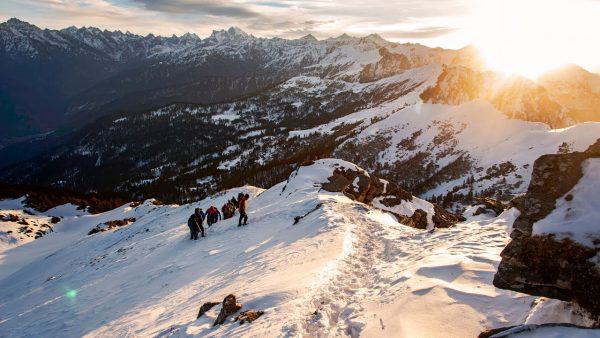
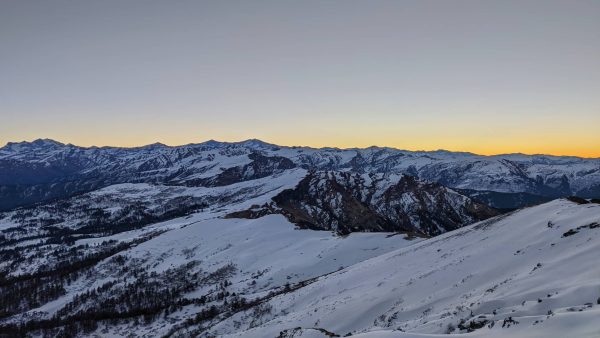
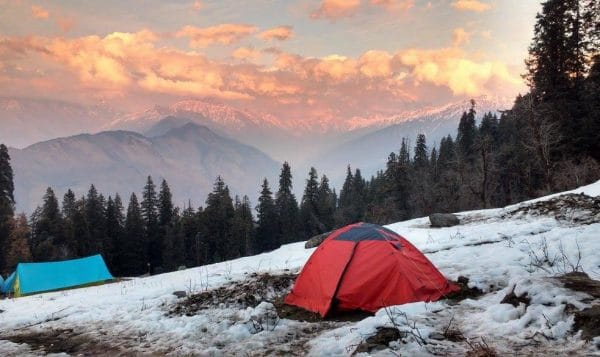
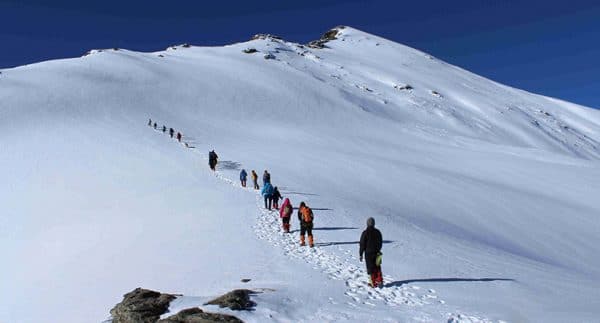
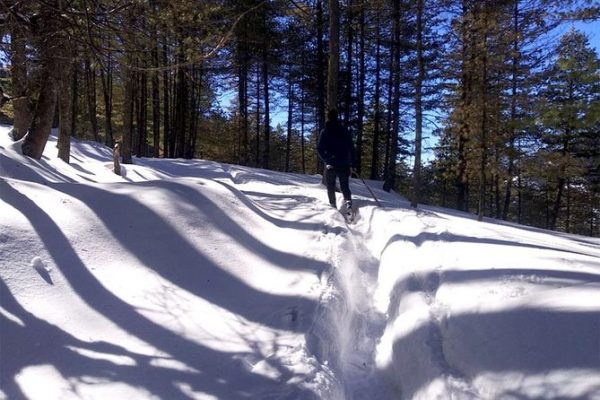



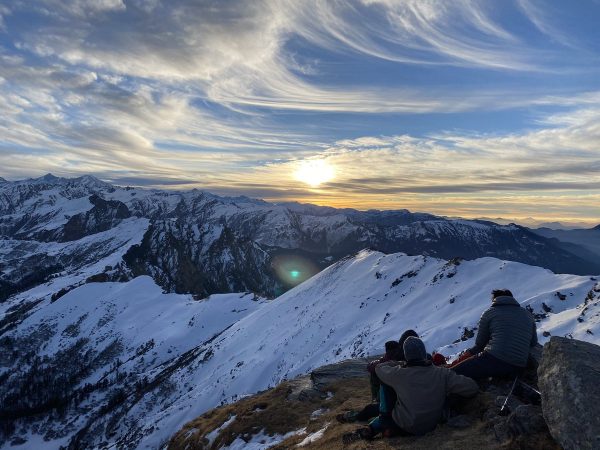
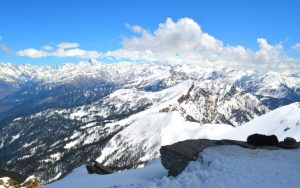
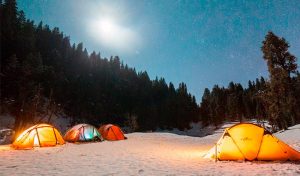





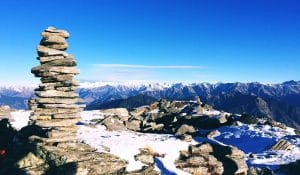
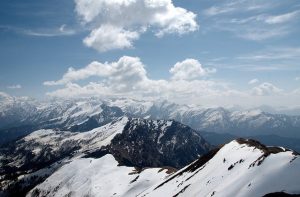
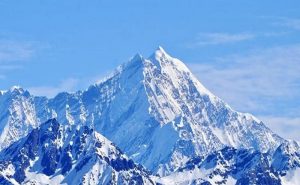


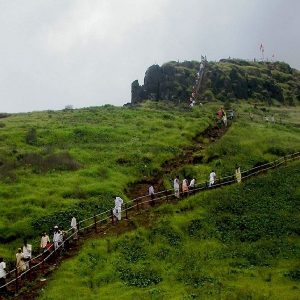
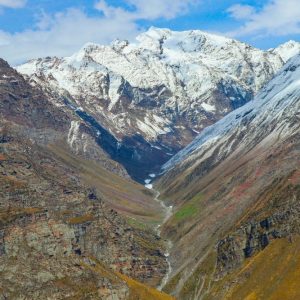
Janhavi Bohra –
The kedarkantha trek was a wonderful experience. Arjun and his team are fantastic, and the meal they serve is delicious. The campsites were perfect, and we had a great time. Keep up the good work Jannattrips
Divyansh Agarwal –
This was the best trek I did, Never thought this type of place exist in India. Thankyou Jannattrips for taking care of all the things perfectly .
Javelina Jose –
Wonderful Experience of kedarkantha trek everthing is as per expectation there hotel & camps both are perfect food is delicious & guide Mr hemant is experienced
thankyou so much jannattrips
Pretti Maurya –
The entire trek was a fantastic experience from beginning to ending. The trek leaders looked upon us well and made sure we had a great time. Last but not least, compliments to all the incredible individuals I went on this trip with; it was yet another lovely example of how total strangers become close friends.
Neha Sharma –
We truly felt that we could trust them since they were trustworthy and genuine, and we had a wonderful experience together. From the beginning to the end, the camps provided excellent care and delicious cuisine. There was no better trekking company I could have hoped for. If you have the chance, do join them.
Aaryan Jain –
I just visited the kerdarkanta trek with my friends it’s best experience. Everything from pickup to drop is followed as per schedule , the food, accomodation & guide is great. Thanks for providing great & memorable experience.
Rajat meena –
There customer support is amazing ready to take the queries anytime and perfectly deal with them, it was the great trip for me thank you jannattrips for this memorable trekking experience
Deepika Kala –
Kedarkantha journey is something you will remember for the rest of your life. Travel is all about creating memories, and we have plenty to share with our family and friends.